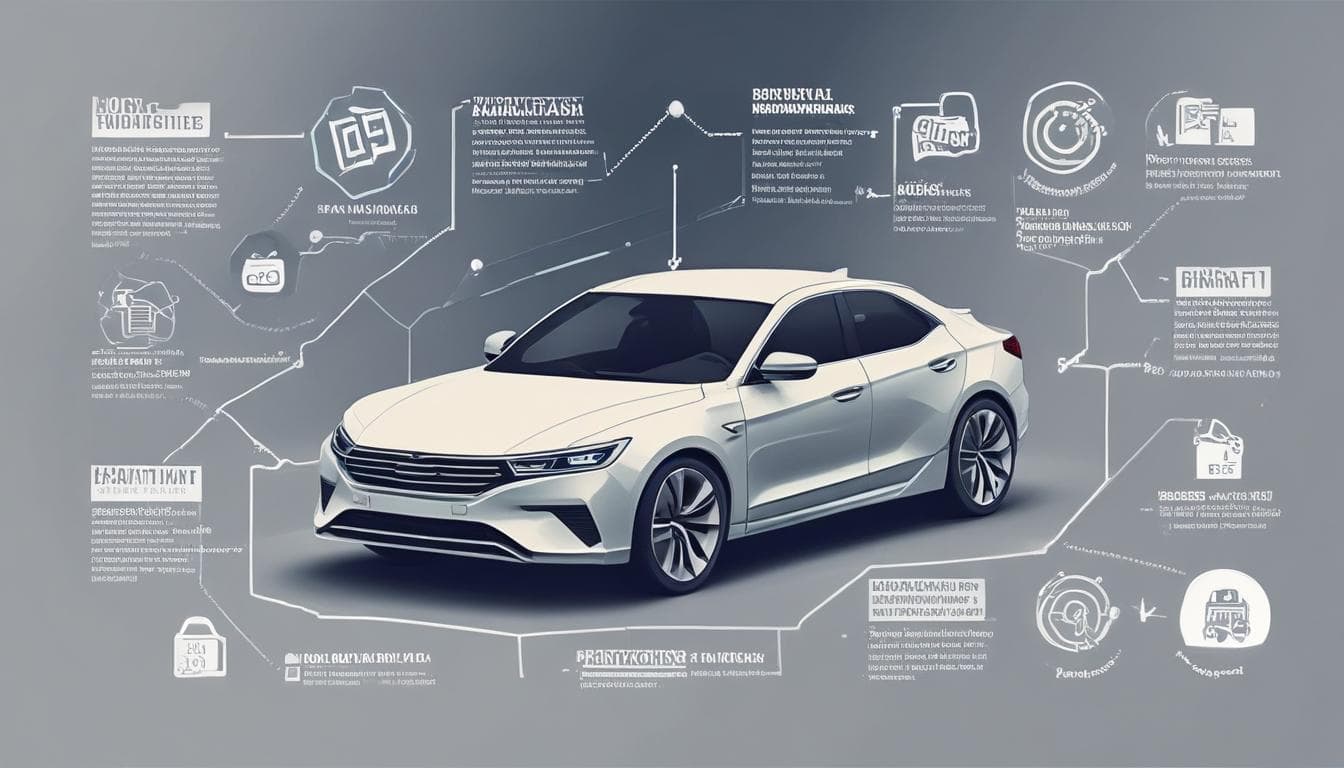Smart materials are revolutionizing various industries, and the automotive sector is no exception. These advanced materials possess unique properties that enable them to respond to external stimuli, such as temperature, pressure, light, or electric and magnetic fields, by changing their shape, color, stiffness, or other characteristics. This adaptability opens up a world of possibilities for creating more efficient, safer, and sustainable vehicles.
Types of Smart Materials and Their Automotive Applications
Shape-Memory Alloys (SMAs)
SMAs are metals that can "remember" their original shape and return to it after being deformed. This unique property makes them ideal for various automotive applications.
- Active aerodynamic systems: SMAs can be used to create active spoilers and other aerodynamic elements that adjust their shape based on driving conditions, improving fuel efficiency and handling.
- Vibration damping: SMAs can dampen vibrations and reduce noise levels in the vehicle cabin, enhancing passenger comfort.
- Micro-actuators: SMAs can be used in micro-actuators for various applications, such as controlling fuel injectors and adjusting mirror positions.

Piezoelectric Materials
Piezoelectric materials generate an electric charge when subjected to mechanical stress and vice versa. This property makes them suitable for sensors and actuators in various automotive systems.
- Tire pressure monitoring systems (TPMS): Piezoelectric sensors can accurately measure tire pressure, improving safety and fuel efficiency.

- Knock sensors: These sensors detect engine knock and adjust the ignition timing to prevent damage.
- Fuel injectors: Piezoelectric actuators can precisely control the fuel injection process, optimizing engine performance and reducing emissions.

Magneto-Rheological Fluids (MRFs)
MRFs are fluids whose viscosity changes in response to a magnetic field. This property allows for real-time control of damping and stiffness in automotive suspensions.
- Adaptive suspension systems: MRFs enable suspension systems to adapt to varying road conditions and driving styles, improving ride comfort and handling.

- Haptic feedback systems: MRFs can provide haptic feedback to the driver, enhancing the driving experience and improving safety.
Thermoelectric Materials
Thermoelectric materials can convert heat energy into electrical energy and vice versa. This property has potential applications in automotive waste heat recovery systems.
- Waste heat recovery: Thermoelectric generators can capture waste heat from the engine and exhaust system and convert it into electricity, improving fuel efficiency.

- Climate control systems: Thermoelectric materials can be used for heating and cooling seats, improving passenger comfort.

Chromogenic Materials
Chromogenic materials change their color or optical properties in response to external stimuli like light, temperature, or electric fields.
- Smart windows: Chromogenic materials can be used to create smart windows that automatically tint in response to sunlight, reducing glare and improving energy efficiency.

- Automotive displays: Chromogenic materials can be used to create dynamic displays that change color and appearance based on driving conditions or user preferences.

The Future of Smart Materials in the Automotive Industry
Smart materials are poised to play an increasingly important role in the future of the automotive industry. As research and development in material science continue to advance, we can expect even more innovative applications of these materials in vehicles. The use of smart materials will contribute to the development of lighter, more efficient, safer, and more sustainable vehicles. Similar advancements are also being driven by the rise of biometrics in automotive security and personalization. 
The integration of smart materials with other advanced technologies, such as artificial intelligence and the Internet of Things (IoT), will further enhance their capabilities and unlock new possibilities for creating truly intelligent and responsive vehicles. For example, the convergence of EVs and IoT is transforming the automotive landscape by leveraging interconnected systems. The future of mobility is undoubtedly intertwined with the continued development and application of smart materials.
In conclusion, smart materials are transforming the automotive industry by enabling innovative solutions for various challenges, from improving fuel efficiency and safety to enhancing passenger comfort and the overall driving experience. As the technology matures and costs decrease, the adoption of smart materials in vehicles is expected to accelerate, paving the way for a future of smarter, more sustainable, and more responsive mobility. This is further enhanced by innovations such as generative AI revolutionizing the automotive industry. We encourage readers to explore further research on smart materials and their applications, and to consider the potential impact of these materials on the future of transportation. Share your thoughts and ideas in the comments below and contribute to the ongoing discussion about the future of mobility.






